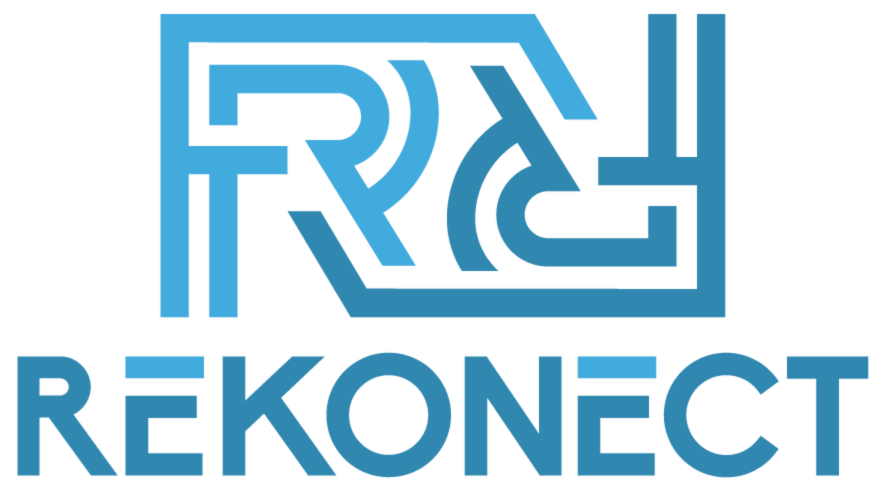Building a nonprofit board that fuels organizational growth and impact is essential for any mission-driven organization. As we already covered in this guide, a strong board not only provides governance and oversight but also acts as a key driver in fundraising, strategic planning, and community outreach.
In this post, we’ll walk through actionable steps to create a board that supports your nonprofit’s long-term success, sharing practical tips and examples along the way. We’ll also highlight Rekonect’s resources for nonprofit governance to give you additional tools on your journey.
For nonprofits, a well-constructed board can make the difference between merely surviving and truly thriving. The board’s responsibilities extend far beyond routine oversight; they become a cornerstone in shaping the organization’s vision, driving fundraising efforts, and ensuring strategic decisions align with your mission. When board members are clear about their roles, properly recruited, onboarded, and engaged, they form a powerful team capable of navigating the complex challenges of the nonprofit world.
A strong board is essential for several reasons:
- Governance: A board provides the structure and oversight necessary to keep the organization on track, ensuring it operates ethically and legally.
- Fundraising: Board members can tap into their networks and contribute personally, helping to secure essential funds.
- Strategic Planning: With diverse expertise, board members guide the organization through strategic decisions, adapting to changing environments and identifying new opportunities.
By investing time and resources into building an effective board, nonprofit leaders can lay a solid foundation for sustainable growth and lasting impact.
Step 1: Define Roles and Responsibilities
The first step in constructing a successful board is to clearly define what you expect from its members. A comprehensive understanding of roles and responsibilities helps prevent confusion. It promotes accountability and ensures that every board member contributes effectively, as well.
Investopedia actually goes into more detail about this, which you can find here.
Clear Expectations for Board Members
A strong board starts with clarity. Every board member should have a well-defined role that outlines their duties, commitment, and how they fit into the organization’s mission. Establish a written document—often referred to as the board handbook or charter—that details these expectations. This document should include:
- Time commitment: Clearly state the expected number of meetings per year, including special sessions or retreats.
- Preparation requirements: Outline expectations regarding pre-meeting readings, participation in committees, and engagement in strategic discussions.
- Financial responsibilities: Include guidelines for personal financial contributions or fundraising targets, ensuring board members lead by example.
Examples of Typical Board Member Roles
While every nonprofit is unique, some common roles are found in most boards. Here are a few examples:
- Board Chair: This individual leads meetings, sets agendas in collaboration with the CEO or Executive Director, and ensures that the board functions effectively.
- Vice-Chair: Acts as a deputy to the Chair, stepping in during their absence, and may oversee special projects or committees.
- Treasurer: Responsible for overseeing the organization’s financial health, the treasurer works closely with the finance team to monitor budgets, review financial statements, and ensure fiscal responsibility.
- Secretary: Handles documentation, ensuring accurate minutes are taken during meetings, and manages official records and board correspondence.
- General Board Members: These individuals bring diverse skills and perspectives to the board, contributing to discussions on strategy, program evaluation, and community outreach.
By defining these roles early on, you help to foster a sense of ownership and accountability that will benefit your nonprofit in the long run.
Step 2: Recruit the Right People
Recruitment is arguably the most critical step when it comes to building a board that drives success. The goal is to bring in individuals who not only align with your nonprofit’s values but also offer a diverse range of skills, experiences, and perspectives.
Tips for Identifying Skills and Diversity Needs
Before you begin recruiting, take a moment to perform a skills gap analysis. Identify the areas where your board is currently lacking and determine the expertise that could help your organization thrive. Consider these factors:
- Professional Skills: Look for candidates with expertise in finance, legal matters, marketing, technology, or other areas critical to your operations.
- Personal Attributes: Seek individuals who demonstrate commitment, integrity, and a passion for your cause. A diverse board in terms of age, gender, ethnicity, and professional background can provide richer perspectives and foster more innovative solutions.
- Community Connection: Choose members who have strong ties to the community you serve. Their networks and local knowledge can prove invaluable in outreach and fundraising efforts.
Sources for Recruiting Potential Board Members
There are several avenues you can explore to find suitable candidates for your board:
- Current Stakeholders: Reach out to dedicated volunteers, donors, or clients who have demonstrated commitment to your organization. They often have firsthand knowledge of your mission and can offer unique insights.
- Professional Networks: Leverage platforms such as LinkedIn, professional associations, or local business groups to identify individuals with the necessary skills and experience.
- Community Recommendations: Engage with community leaders, other nonprofits, and local government representatives who can suggest potential board members.
- Recruitment Platforms: Use nonprofit-specific platforms and events that focus on board recruitment. Many organizations host networking events, workshops, and seminars geared towards identifying and recruiting talented individuals.
By diversifying your recruitment strategies, you increase the likelihood of assembling a board that represents a wide range of skills, perspectives, and networks, all of which are crucial for driving your nonprofit’s success.
Step 3: Onboard and Train Members
Recruiting the right people is only half the battle. The next essential step is to onboard and train new board members so they can contribute effectively from the start. A robust orientation and ongoing education program will help board members understand their responsibilities, the organization’s mission, and how their efforts impact the overall strategy.
The Importance of Orientation and Ongoing Education
An effective onboarding process sets the stage for board success. It’s important that every new board member feels welcomed and fully informed about the organization’s operations, culture, and goals. A thorough orientation program should include:
- Mission and Vision: Provide a detailed overview of your organization’s history, mission, and long-term objectives.
- Board Structure and Governance: Explain the governance model, roles, responsibilities, and how decisions are made. Clarify any legal obligations or ethical standards board members are expected to uphold.
- Financial Overview: Educate members on the nonprofit’s budgeting process, funding sources, and financial health. Understanding the fiscal landscape is essential for effective oversight.
- Key Policies and Procedures: Go over conflict of interest policies, confidentiality agreements, and any other guidelines that govern board conduct.
Suggested Topics for Board Training Sessions
Ongoing education is crucial to keep board members updated on best practices and emerging trends in nonprofit governance. Consider organizing training sessions on the following topics:
- Fundraising Strategies: Explore different fundraising models, donor engagement techniques, and innovative approaches to revenue generation.
- Financial Management: Offer workshops on financial literacy, budgeting, and understanding financial statements.
- Strategic Planning: Provide sessions that focus on long-term planning, scenario analysis, and measuring the impact of strategic decisions.
- Leadership and Team Building: Enhance skills related to effective leadership, conflict resolution, and collaborative decision-making.
- Compliance and Legal Issues: Regularly update board members on changes in regulations and legal requirements that affect nonprofit operations.
Investing in robust onboarding and continuous training ensures that board members remain well-informed and equipped to support your organization’s evolving needs. For nonprofits seeking additional resources, Rekonect offers a range of governance tools and educational materials to streamline this process and enhance board effectiveness.
Step 4: Foster Engagement and Accountability
Even the best board structures can falter if members are not actively engaged. Fostering a culture of accountability and continuous improvement is essential to ensure that board members remain motivated and contribute meaningfully to your organization’s success.
How to Motivate Board Members
Keeping board members engaged requires ongoing effort and intentional strategies. Here are some ways to foster active participation:
- Regular Communication: Maintain an open line of communication through frequent updates, newsletters, and one-on-one check-ins. This ensures that board members are aware of the organization’s progress, challenges, and opportunities.
- Clear Goals and Metrics: Set measurable objectives for board activities. Whether it’s fundraising targets, attendance at meetings, or participation in committees, clear metrics can motivate members to stay on track.
- Recognition and Incentives: Celebrate successes publicly and acknowledge the contributions of individual board members. Recognition can come in many forms—shoutouts during meetings, awards, or even simple thank-you notes.
- Opportunities for Professional Growth: Offer board members opportunities to attend conferences, workshops, or networking events that not only benefit the organization but also enhance their personal and professional skills.
Tracking Contributions and Ensuring Accountability
To sustain engagement, it’s important to monitor how each board member contributes and address any gaps or issues proactively. Consider implementing the following practices:
- Regular Performance Reviews: Conduct annual or bi-annual evaluations of board performance. This review can be self-assessed or facilitated by an external consultant to ensure impartial feedback.
- Committee Reports: Encourage committees to provide regular updates on their activities and progress. These reports can be shared during board meetings to foster a sense of collective accountability.
- Clear Consequences for Inaction: Develop a framework for addressing underperformance or disengagement. It might include additional training, reassignment of responsibilities, or, in some cases, a transition out of the board.
- Board Retreats and Workshops: Organize periodic retreats where board members can reflect on past performance, plan for the future, and build stronger interpersonal connections.
By setting clear expectations, tracking contributions, and celebrating successes, you create an environment where every board member feels accountable and motivated to contribute their best. This commitment not only enhances board performance but also directly translates into better governance and strategic outcomes for your nonprofit.
Conclusion
A strong nonprofit board is a vital asset, driving success through effective governance, strategic oversight, and active community engagement. By clearly defining roles, recruiting the right mix of talent, providing comprehensive onboarding and training, and fostering ongoing engagement and accountability, nonprofit leaders can build a board that truly drives success.
For those looking to enhance their board’s performance and overall nonprofit governance, resources like those provided by Rekonect can be invaluable. Rekonect’s tailored services and governance resources offer guidance—from board development and strategic planning to ongoing training and support—ensuring that your board has the tools it needs to excel.
Ready to build a nonprofit board to last? Reach out to Rekonect today!

